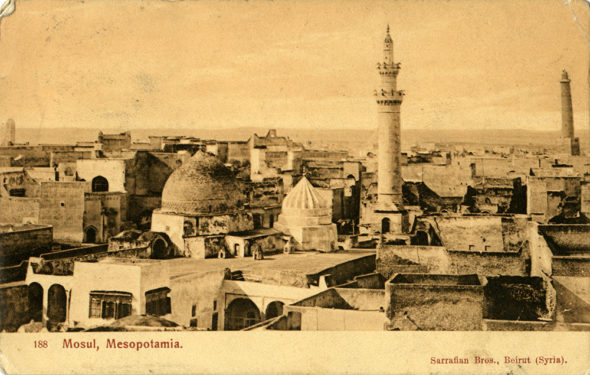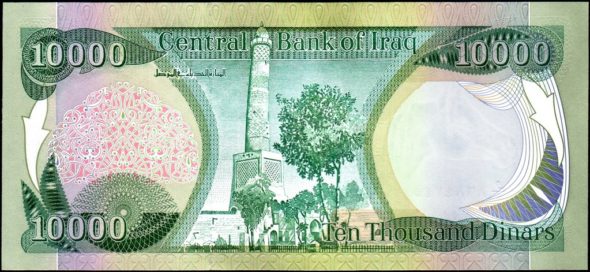The United Arab Emirates is contributing 50.4 million dollars to UNESCO for the rebuilding of al Nuri mosque in Mosul, Iraq. The Islamic State (ISIS) destroyed the mosque intentionally in 2017 as Iraqi troops were in the final stages of liberating the country’s third largest city. Ironically, it was from the pulpit of this same mosque that ISIS leader Abu Bakr al Baghdadi had announced in 2015 the formation of a caliphate in Iraq and Syria.

Early 20th century postcard showing Al Nuri mosque standing in the background with its leaning minaret. Norbert Schiller Collection Phot. Sarrafian Bros.
The 800-year old mosque, with its iconic leaning minaret, was one of Mosul’s most recognizable landmarks affectionately called al Haba or “the Hunchback.” Pictures of the minaret were found on postcards and are featured on Iraq’s 10,000-dinar bank note.

The leaning minaret of al Nuri mosque featured on Iraq’s 10,000 Dinar bank note
The mosque is named after Nur al Din Mahmoud al Zangi, a leader who was instrumental in uniting Moslems in what is now Syria and Iraq to join forces in defeating the Crusaders in the 12th century. Nur al Din used the spoils he reaped during wartime to build madrassas or religious schools and mosques.
This is not the first time that al Nuri had to be repaired as a result of fighting. During the Iran-Iraq war, in the 1980s, the mosque was damaged after bombs landed nearby weakening its foundation.
The reconstruction will take five years to complete. It’s not clear at this point if the rebuilt minaret will keep its distinct lean.
